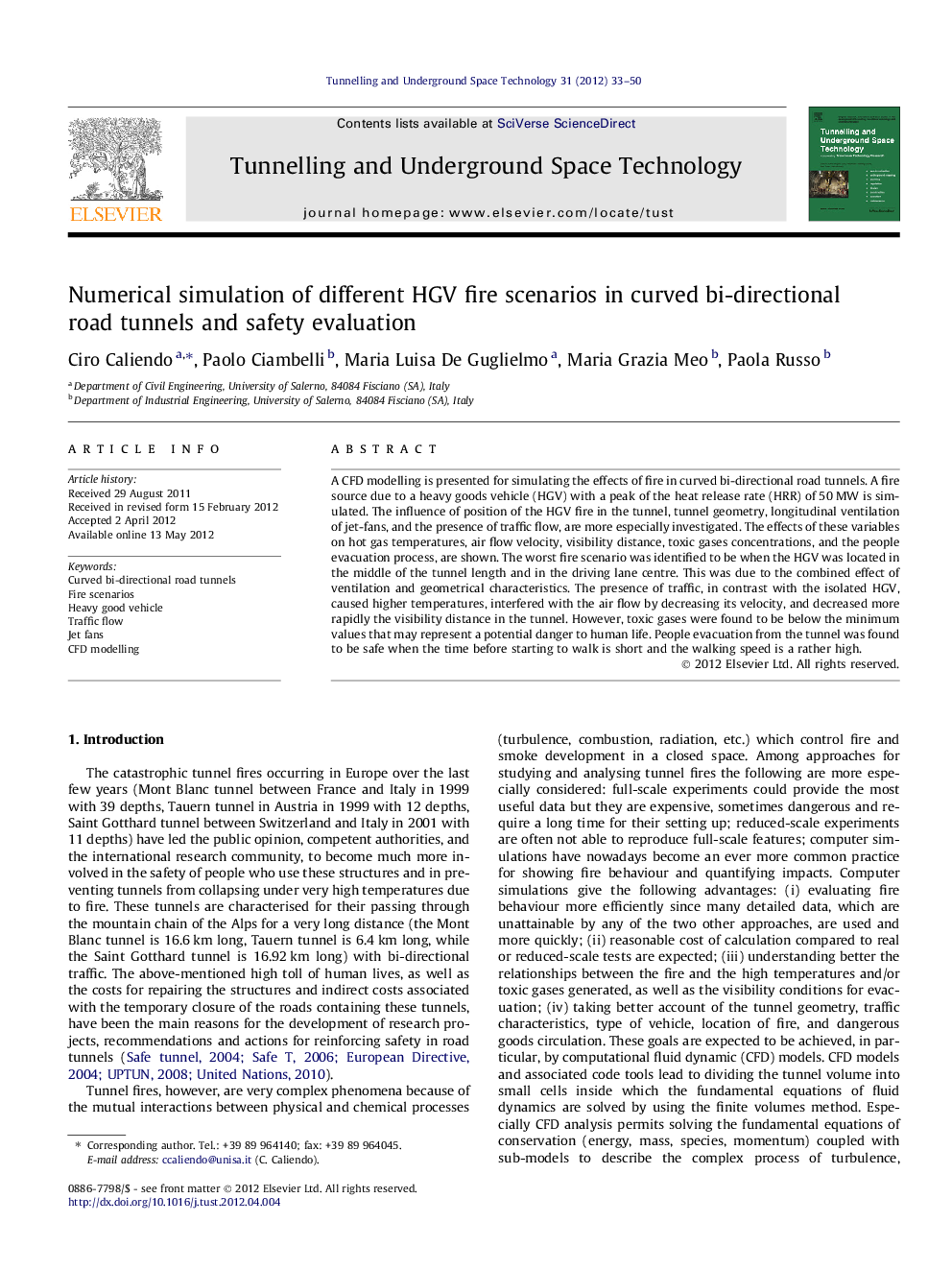| Article ID | Journal | Published Year | Pages | File Type |
|---|---|---|---|---|
| 312423 | Tunnelling and Underground Space Technology | 2012 | 18 Pages |
A CFD modelling is presented for simulating the effects of fire in curved bi-directional road tunnels. A fire source due to a heavy goods vehicle (HGV) with a peak of the heat release rate (HRR) of 50 MW is simulated. The influence of position of the HGV fire in the tunnel, tunnel geometry, longitudinal ventilation of jet-fans, and the presence of traffic flow, are more especially investigated. The effects of these variables on hot gas temperatures, air flow velocity, visibility distance, toxic gases concentrations, and the people evacuation process, are shown. The worst fire scenario was identified to be when the HGV was located in the middle of the tunnel length and in the driving lane centre. This was due to the combined effect of ventilation and geometrical characteristics. The presence of traffic, in contrast with the isolated HGV, caused higher temperatures, interfered with the air flow by decreasing its velocity, and decreased more rapidly the visibility distance in the tunnel. However, toxic gases were found to be below the minimum values that may represent a potential danger to human life. People evacuation from the tunnel was found to be safe when the time before starting to walk is short and the walking speed is a rather high.
► Text deals with different HVG fire scenarios in road tunnels. ► Investigated variables are vehicle positions, tunnel geometry, traffic, ventilation. ► Fire severity factors are combined effect of ventilation and geometry, and traffic.
